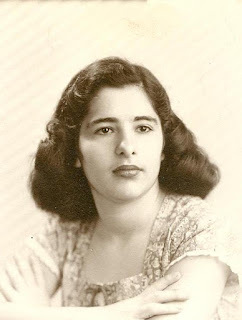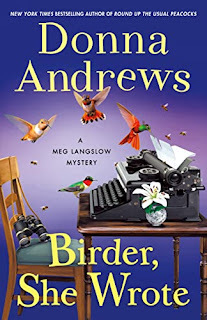Sometimes Parents Can't Be Saved (and a Book Recommendation)
 Martha Kanell, Dave's mother
Martha Kanell, Dave's motherFloods, fires, mass shootings -- in each news report, my eyes strain to see the children, in hopes that someone has saved them, putting them first. It seems like a shared value: If we can, we rescue the children. Then we look for others, including parents, grandparents, and more.
My husband Dave and I found many "coincidences" as we compared our lives before we met, at age 50. One especially poignant one involved our mothers: His mother, Martha, had died suddenly when just 57 years old (trust me, younger readers, that's a very unfair age for death), of a preventable complication from a hospital procedure. My mother, Joan, died suddenly at age 53 from a preventable complication from a hospital stay that in turn should never have happened.
Both of us agonized over those deaths—not just the grief of losing your mother before you've really had time to share adulthood with her, but also the insistent feeling that there must have been something we could have done to save them.
Sometimes, though, as I'm probing in my memoir segments at https://bethkanell.medium.com, that saving notion is a fantasy. Maybe it makes us feel that life is more predictable, if we imagine we have the strength and skills to save people. Maybe we're drowning in persistent guilt and trying to breathe.
One way I balance the loss and grief that life brings is by walking each morning, looking for ways to frame Vermont's natural beauty in photos. Poetry steps into that same balancing. And, of course, I read books. Although I read a lot of mysteries, some of them present caring stories where people support their neighbors and some people DO get saved! Here's a good one, new to the market today:
Birder, She Wrote, by Donna Andrews -- Relaxing Reading!

[originally published at New York Journal of Books]
“Betweenthe careful plotting, the clever twists, and the colorful descriptions, Birder,She Wrote fills a nice slot for summer beach reading.”
Ah,summer in the country—a hammock, watching the hummingbirds, a break beforegoing back to her job as the mayor’s special projects assistant. Meg Langslowought to be able to count on that much, right? But that would be leaving outthe hive of bees her father is setting up at her home, her grandmotherCordelia’s community activism that’s somehow landed a reporter among them, andof course, the political challenges of her job, inconvenient and pressing.
Her“short list” at the end of the first chapter already involves calming twowealthy families in town and finding the two unusual men whose lives havecaused an upset. An upset, that is, about bees. Funny coincidence, right?
Actually,from the moment Britni the reporter pushes into the family’s efforts, nothingfeels very funny. Almost immediately—after all, this is book 33 in the livelySouthern mystery series that always involves some level of bird life out in thecountryside—a dead body turns up. And finding the lost naturalist resolvesnothing! Meanwhile, why on earth is Britni determined to profile Meg’s sociallyactive grandmother for a sappy sweet-tea magazine that focuses on decor anddresses?
Counton Andrews for liberal splashes of humor: Meg and the law enforcement team,including Meg’s father, search the woods using Pomeranians as snuffling bodydetectors and then as search-and-rescue canines. Gentle puns also abound. ButAndrews also sticks with the tried-and-true regimen of a good crime novel:clues and red herrings, and probing for the perfect combination of motive,means, and opportunity that makes clear who’s got a mission to murder in theneighborhood.
Megpresses the chief of police to reason more closely about the murder victim:“How’d he manage to get himself killed out here near one of Clay County’sbetter-known drug and moonshine markets? And … isn’t it more usual for drugdealers and moonshine sellers to keep shifting around where they do theirdealing?” She pairs the circumstances with her knowledge of her hometown andpast crimes, and takes the notion further: “What if Wally the Weird now fancieshimself a hotshot vigilante anti-drug crusader? What if he thought he’d foundanother neighborhood teen on his way to buy drugs and followed them out here toget the goods on them?”
Meg’salso blunt when questioning local citizens, including those complaining aboutwildlife around their new homes in the country: “The bees were here first,” shepoints out. “If a bee-free environment was essential to your health andhappiness, maybe you should have done a little more investigation before youbought your house.” The point’s well taken, and might have eliminated somelocal friction and even dropped a suspect off the list, if only the woman Meglectured hadn’t turned out to be a likely victim of blackmail. So the questionbecomes, at what point does blackmail and the threat to “tell a secret” becomemotive enough to kill?
Addingfresh timeliness to the novel is a sideline of tracking down a long-vanishedAfrican-American cemetery in the woods—something that the prissy-appearingreporter tagging along finds totally uninteresting, but that puts thePomeranians to even more use and engages Meg and her family with more of theneighbors and their histories.
Andrewsoffers a smoothly spun story full of her trademark observations of nature (notjust birds) and women’s friendships. Between the careful plotting, the clevertwists, and the colorful descriptions, Birder, She Wrote fills a niceslot for summer beach reading. Just don’t start looking up things like the“murder hornets” Meg has to consider, before packing your book bag forvacation.
@font-face {font-family:"Cambria Math"; panose-1:2 4 5 3 5 4 6 3 2 4; mso-font-charset:0; mso-generic-font-family:roman; mso-font-pitch:variable; mso-font-signature:-536869121 1107305727 33554432 0 415 0;}@font-face {font-family:Calibri; panose-1:2 15 5 2 2 2 4 3 2 4; mso-font-charset:0; mso-generic-font-family:swiss; mso-font-pitch:variable; mso-font-signature:-469750017 -1073732485 9 0 511 0;}p.MsoNormal, li.MsoNormal, div.MsoNormal {mso-style-unhide:no; mso-style-qformat:yes; mso-style-parent:""; margin:0in; mso-pagination:widow-orphan; font-size:12.0pt; font-family:"Times New Roman",serif; mso-fareast-font-family:"Times New Roman";}.MsoChpDefault {mso-style-type:export-only; mso-default-props:yes; font-family:"Calibri",sans-serif; mso-ascii-font-family:Calibri; mso-ascii-theme-font:minor-latin; mso-fareast-font-family:Calibri; mso-fareast-theme-font:minor-latin; mso-hansi-font-family:Calibri; mso-hansi-theme-font:minor-latin; mso-bidi-font-family:"Times New Roman"; mso-bidi-theme-font:minor-bidi;}div.WordSection1 {page:WordSection1;}



